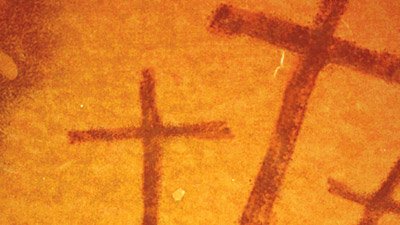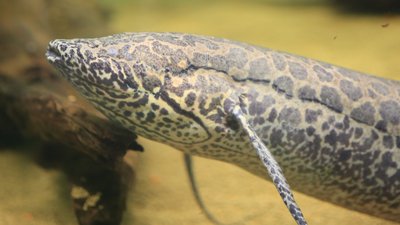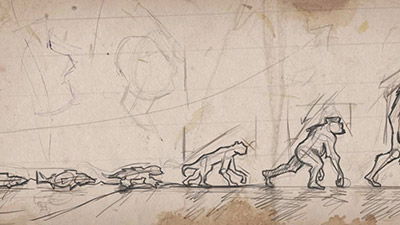River-Slosher—Missing Link?
A team of paleontologists publishing in Nature has “identified” a fossil that is being hailed as the missing link connecting land mammals to our supposed (and closely related) evolutionary kin of whales, dolphins, and porpoises.
News Source
- ScienceNOW: “Long-Lost Relative of Whales Found?”
The animal, described as an “extinct, raccoon-sized creature that sloshed along river bottoms,” is known as Indohyus, part of a group of extinct mammals called raoellids. Known “from little more than their teeth,” raoellids have been associated with hoofed mammals. Now, paleontologists led by Hans Thewissen (of Northeastern Ohio Universities College of Medicine) have analyzed Indohyus fossils found in Kashmir more than two decades ago that were recently freed from surrounding rock.
So, what connects Indohyus to cetaceans (whales, dolphins, and porpoises)? According to Thewissen, it’s a bony feature called the “involucrum” that covers the inner ear and whose relative thickness is prominent in “all modern and fossil cetaceans.” In addition, the limb bones of Indohyus have thick outer layers, making them dense, like manatees, hippos, and “early whales.” Tooth chemistry analysis suggests Indohyus was water-faring, though carbon isotope analysis shows that Indohyus’s diet differed from that of early whales.
While Indohyus sounds like an interesting creature, we challenge that this evidence connects it evolutionarily with cetaceans. If hippos, manatees, and cetaceans are all mammals of varying aquatic lifestyles, we would expect them to have certain features in common, since (1) God would have designed them, to varying extents, for their habitats, and (2) adaptation through pre-existing information would promote certain features compatible with watery life. As we’ve pointed out in similar situations before, the evidence is always more convincing when one already believes that some creature must connect one group of animals to another group.
Furthermore, it is important to note that not all paleontologists are particularly persuaded that Indohyus is the “missing link” that cetacean-origin experts were looking for. The ScienceNOW article notes that a team set to publish in Cladistics postulates an extinct group of carnivorous mammals called “mesonychids” as more closely related to cetaceans. Additionally, the ScienceNOW article notes that “cetaceans are so different from any other creature that researchers haven’t been able to agree which fossil relatives best represent their nearest ancestors.”
Finally—and perhaps most notable—is that there is often little mention of “missing links” until researchers claim to have found them. That is (and as in this case), evolutionists only acknowledge gaps in the fossil record once they believe they have filled them!
Further Reading
- Tiktaalik and the Fishy Story of Walking Fish, Part 2
- The Origin of Vertebrates
- Get Answers: Fossils
For More Information: Get Answers
Remember, if you see a news story that might merit some attention, let us know about it! (Note: if the story originates from the Associated Press, FOX News, MSNBC, the New York Times, or another major national media outlet, we will most likely have already heard about it.) And thanks to all of our readers who have submitted great news tips to us. If you didn’t catch all the latest News to Know, why not take a look to see what you’ve missed?
(Please note that links will take you directly to the source. Answers in Genesis is not responsible for content on the websites to which we refer. For more information, please see our Privacy Policy.)
Recommended Resources

Answers in Genesis is an apologetics ministry, dedicated to helping Christians defend their faith and proclaim the good news of Jesus Christ.
- Customer Service 800.778.3390
- © 2024 Answers in Genesis






